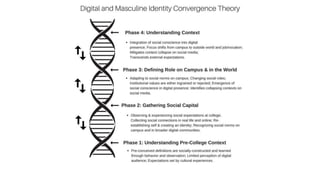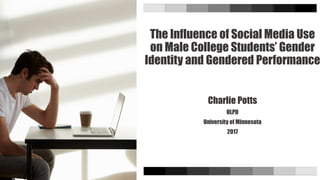This document summarizes a study on how social media influences the gender identity and performance of male college students. It examines how first-year and senior male students describe their social media behavior and how it intersects with their gender identity. Key findings include that masculinity is just one part of a student's identity, pre-college concepts influence college views, and navigating multiple identities is difficult. The study develops a four-stage theory of how students' understanding and use of social media evolves from gathering social capital as freshmen to understanding broader contexts as seniors. It recommends extending digital citizenship education and better integrating physical and digital communities.
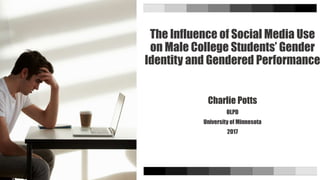



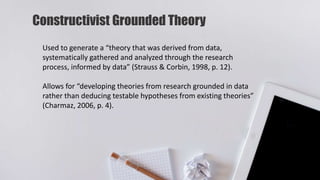

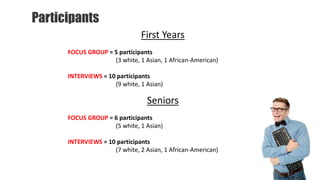


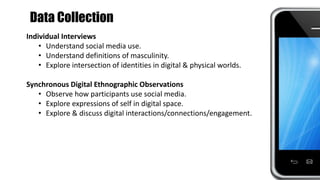


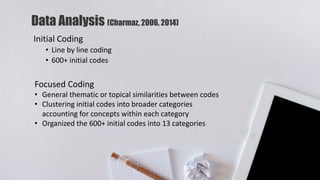





![Defining Social Media Use
“I use [social media] at like toxic levels. There’s
rarely downtime when I’m not checking
something. It really is just force of habit for me –
like it’s there and I know it’s there so I check it.”
- Miguel (senior)
“I definitely check it more frequently than ever
before [at college]. It is part of my day just like
eating and studying.”
– Felix (first year)](https://image.slidesharecdn.com/finaldefense-potts2017-170601202430/85/Social-Media-Masculinity-19-320.jpg)
![“I’m like an adult, I should be able to not eat the whole
chocolate cake that’s sitting in front of me. I should be
able to control how I use [social media] and how I
balance it with things I do in my life.”
– Forest (senior)
Defining Social Media Use](https://image.slidesharecdn.com/finaldefense-potts2017-170601202430/85/Social-Media-Masculinity-20-320.jpg)






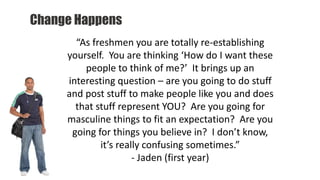
![“I spent a lot of time as a
freshman trying to be cool, but
now [as a senior] it’s about
trying to be cool just a little bit,
but more focused on being an
ambassador of my values and
the values of this place.”
– Ken (senior)
Change Happens](https://image.slidesharecdn.com/finaldefense-potts2017-170601202430/85/Social-Media-Masculinity-28-320.jpg)

